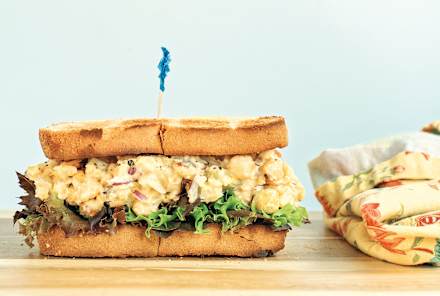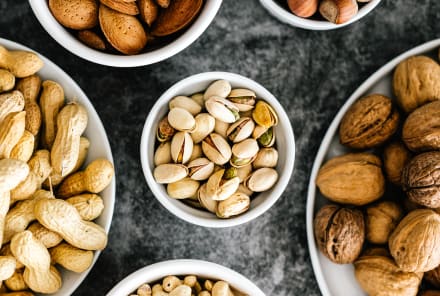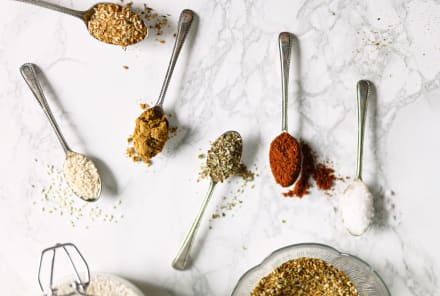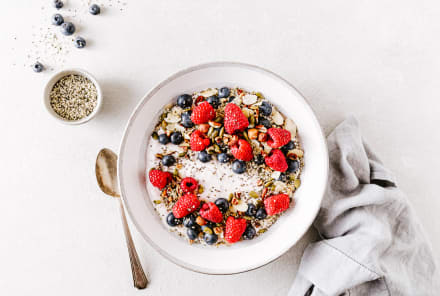Advertisement
Yes, Cheese Can Be Healthy — Here's Why & How Much You Can Eat


Creamy, delectable, and capable of pairing with savory and sweet meals, cheese is beloved by many. But it's not often associated with being healthy—and the processed cheeses full of preservatives, artificial colors, emulsifiers, and flavor enhancers definitely aren't.
But quality cheese—soft or hard—can be good for you while pleasing your taste buds. Here, we break down the health benefits of cheese and how much you can eat to reap the benefits.
Redeeming qualities of cheese
Cheese is a dairy food, whether it comes from a cow or goat, and dairy foods do offer an impressive range of nutrients including:
- Protein: Cheese is a good source of complete and readily absorbable protein. Most cheeses provide between 10 and 14 grams of protein (a great amount for a snack) per 1.5-ounce serving.
- Calcium: Cheese can provide a much-needed amount of calcium to the diet. About 40% of adults1 in the U.S. aren't getting the calcium they need from diet alone. While the calcium content of different cheeses varies widely, Parmesan cheese comes out on top by providing 57% of the daily value for the mineral.
- Phosphorus: Phosphorus (paired with calcium) is vital to building and maintaining healthy bones2 and teeth, and cheese naturally pairs these two important minerals together.
- Healthy fats: All cheeses contain some saturated fats (which isn't a bad thing), and some varieties also provide a decent amount of unsaturated fats3. This (in addition to the protein) makes cheese a satiating and blood-sugar-balancing food.
- Some probiotics: Aged cheeses (like some Goudas and cheddars) are fermented and may retain some live beneficial bacteria4 that are good for your gut microbiome. And now some cottage cheeses are being cultured with probiotic bacteria to further target gut health.
Research-backed benefits of eating cheese
These nutrients seem to have a synergistic effect when consumed together as part of the dairy matrix5.
The dairy matrix is the term used to describe the complex interaction of the nutrients and other bioactive compounds found in dairy products. It may explain why the saturated fat in full-fat dairy is found to have a neutral or even beneficial effect on cardiometabolic health6.
The dairy matrix of cheese, in particular, can vary greatly as cheeses can be fresh or aged, have different protein and fat concentrations, and differ in sugar and lactose content.
Although most research lumps all cheese—high-quality and processed—into one overarching category, research shows that eating cheese is linked to numerous health benefits.
- Heart health: Studies show that eating some cheese reduces the risk of heart disease7.3
- Bone health: People who get enough calcium are more likely to have better bone density8 (and less likely to get osteoporosis).
- Blood sugar balance: Some research shows that cheese consumption is linked to a lower risk of Type 2 diabetes9. It can also help prevent blood sugar spikes immediately after something carb-heavy, which is why dietitians often recommend pairing it with fruit.
- Weight management: When included as part of an overall healthy diet, eating cheese can help people lose weight10 (and then maintain that loss).
- Gut health: The probiotics from fermented cheeses can help create a desirable gut microbiome11.
The ideal amount of cheese to eat
Now, these benefits are seen with some cheese consumption not from eating a lot of cheese.
The sweet spot seems to be about 1-2 ounces of cheese a day. For reference, an ounce is about 1 slice, 1-2 cubes, or ¼ cup shredded cheese. And if you're eating cottage cheese, one serving is equal to ½ cup.
The healthiest types of cheese
All (high-quality) cheese can be a part of a healthy diet. The healthiest ones, though, are the varieties that are high in protein, low in sodium, and have moderate amounts of fat and carbs.
Here are our top 9 picks (we take a deep dive into each of these cheeses here).
- Goat cheese
- Mozzarella
- Ricotta
- Parmesan
- Cheddar cheese
- Swiss
- Cottage cheese
- Quark
The takeaway
Cheese can 100% be a part of a healthy diet. It contributes nutrients like protein and calcium to your diet, and it's incredibly satisfying (for your stomach and soul). But because it is so tasty, it's easy to overeat.
Remember you don't need a lot to reap the benefits of cheese, and if you think you may be eating too much, measure out what 1-2 ounces looks like on a plate, mixed in your eggs, or sprinkled on a salad.
11 Sources
- https://lpi.oregonstate.edu/mic/micronutrient-inadequacies/overview
- https://www.ncbi.nlm.nih.gov/pmc/articles/PMC3461213/
- https://www.ncbi.nlm.nih.gov/pmc/articles/PMC8773190/
- https://www.ncbi.nlm.nih.gov/pmc/articles/PMC4352748/
- https://pubmed.ncbi.nlm.nih.gov/34879148/
- https://www.ncbi.nlm.nih.gov/pmc/articles/PMC7231591/
- https://pubmed.ncbi.nlm.nih.gov/27517544/
- https://pubmed.ncbi.nlm.nih.gov/2200470/
- https://www.ncbi.nlm.nih.gov/pmc/articles/PMC6518137/
- https://www.ncbi.nlm.nih.gov/pmc/articles/PMC4963870/
- https://www.ncbi.nlm.nih.gov/pmc/articles/PMC7524346/
Watch Next
Enjoy some of our favorite clips from classes
Enjoy some of our favorite clips from classes
What Is Meditation?
Mindfulness/Spirituality | Light Watkins
Box Breathing
Mindfulness/Spirituality | Gwen Dittmar
What Breathwork Can Address
Mindfulness/Spirituality | Gwen Dittmar
The 8 Limbs of Yoga - What is Asana?
Yoga | Caley Alyssa
Two Standing Postures to Open Up Tight Hips
Yoga | Caley Alyssa
How Plants Can Optimize Athletic Performance
Nutrition | Rich Roll
What to Eat Before a Workout
Nutrition | Rich Roll
How Ayurveda Helps Us Navigate Modern Life
Nutrition | Sahara Rose
Messages About Love & Relationships
Love & Relationships | Esther Perel
Love Languages
Love & Relationships | Esther Perel
What Is Meditation?
Box Breathing
What Breathwork Can Address
The 8 Limbs of Yoga - What is Asana?
Two Standing Postures to Open Up Tight Hips
How Plants Can Optimize Athletic Performance
What to Eat Before a Workout
How Ayurveda Helps Us Navigate Modern Life
Messages About Love & Relationships
Love Languages
Advertisement

Toasted vs. Untoasted Bread: Experts Explain If One's Easier To Digest
Ximena Araya-Fischel, M.A

Toasted vs. Untoasted Bread: Experts Explain If One's Easier To Digest
Ximena Araya-Fischel, M.A

Toasted vs. Untoasted Bread: Experts Explain If One's Easier To Digest
Ximena Araya-Fischel, M.A
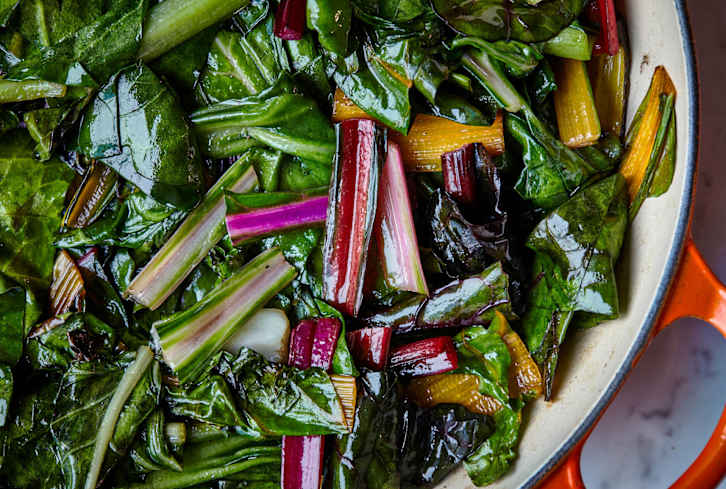
This RD's Tip Helps Gauge The Nutrient Density Of Meals (+ A Tasty Recipe)
Carly Knowles, M.S., RDN, L.D.

Toasted vs. Untoasted Bread: Experts Explain If One's Easier To Digest
Ximena Araya-Fischel, M.A

This RD's Tip Helps Gauge The Nutrient Density Of Meals (+ A Tasty Recipe)
Carly Knowles, M.S., RDN, L.D.



